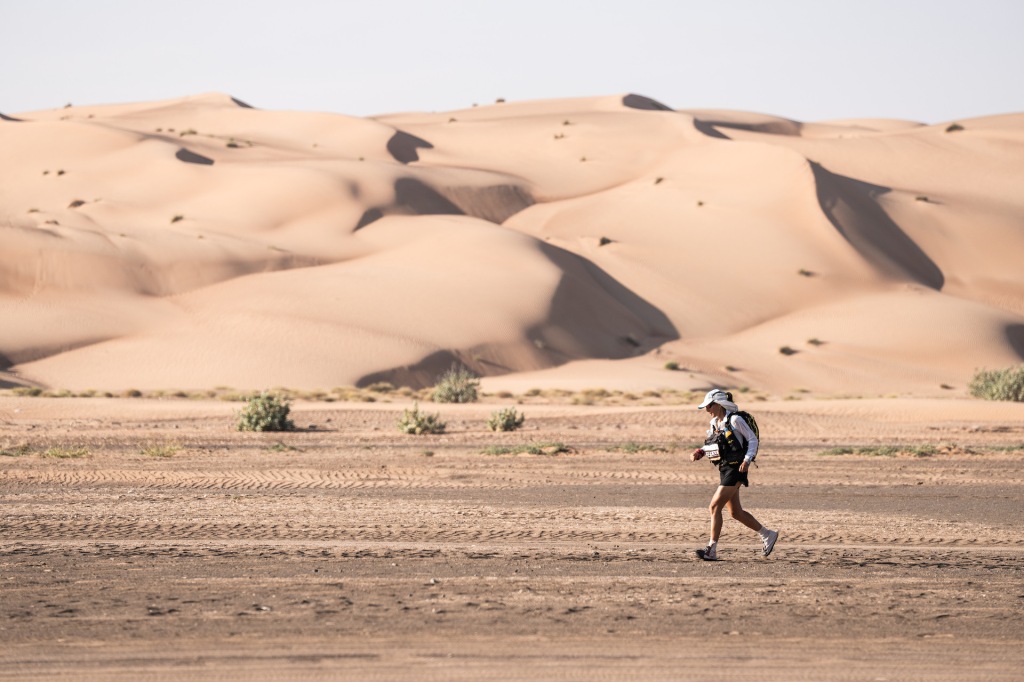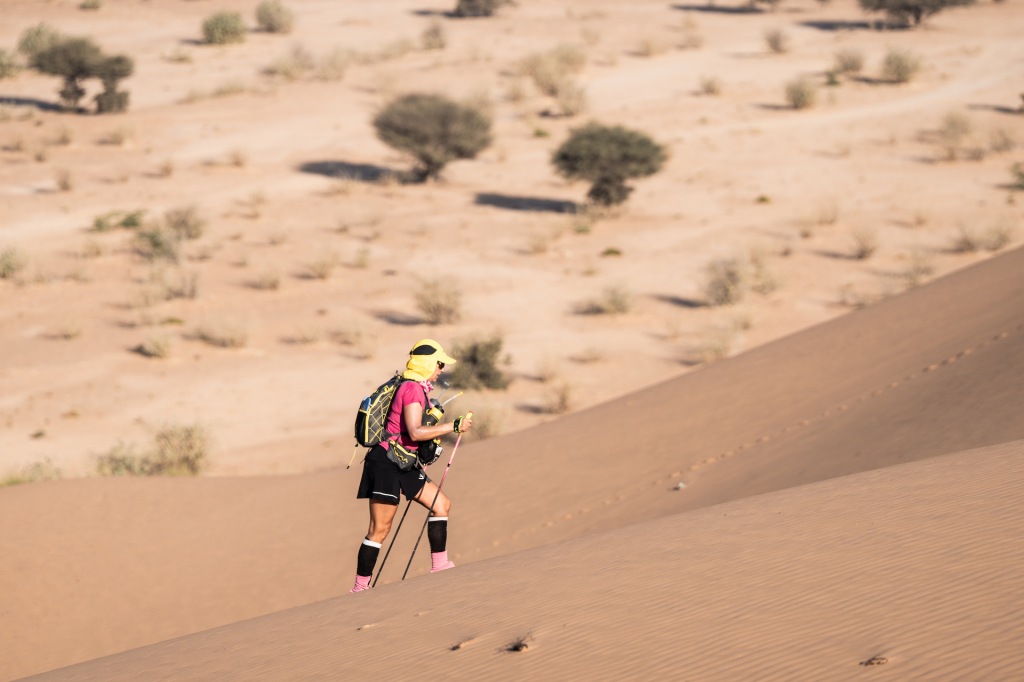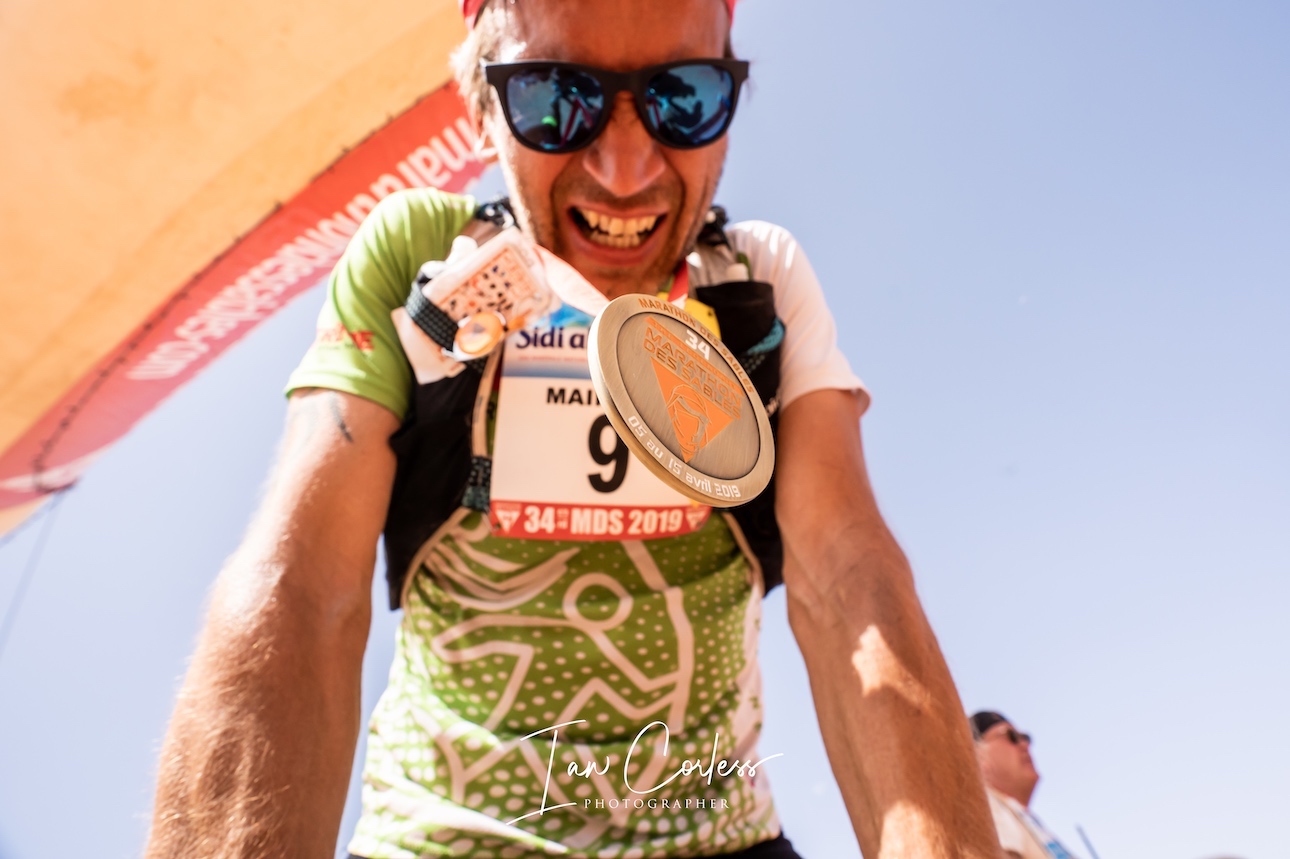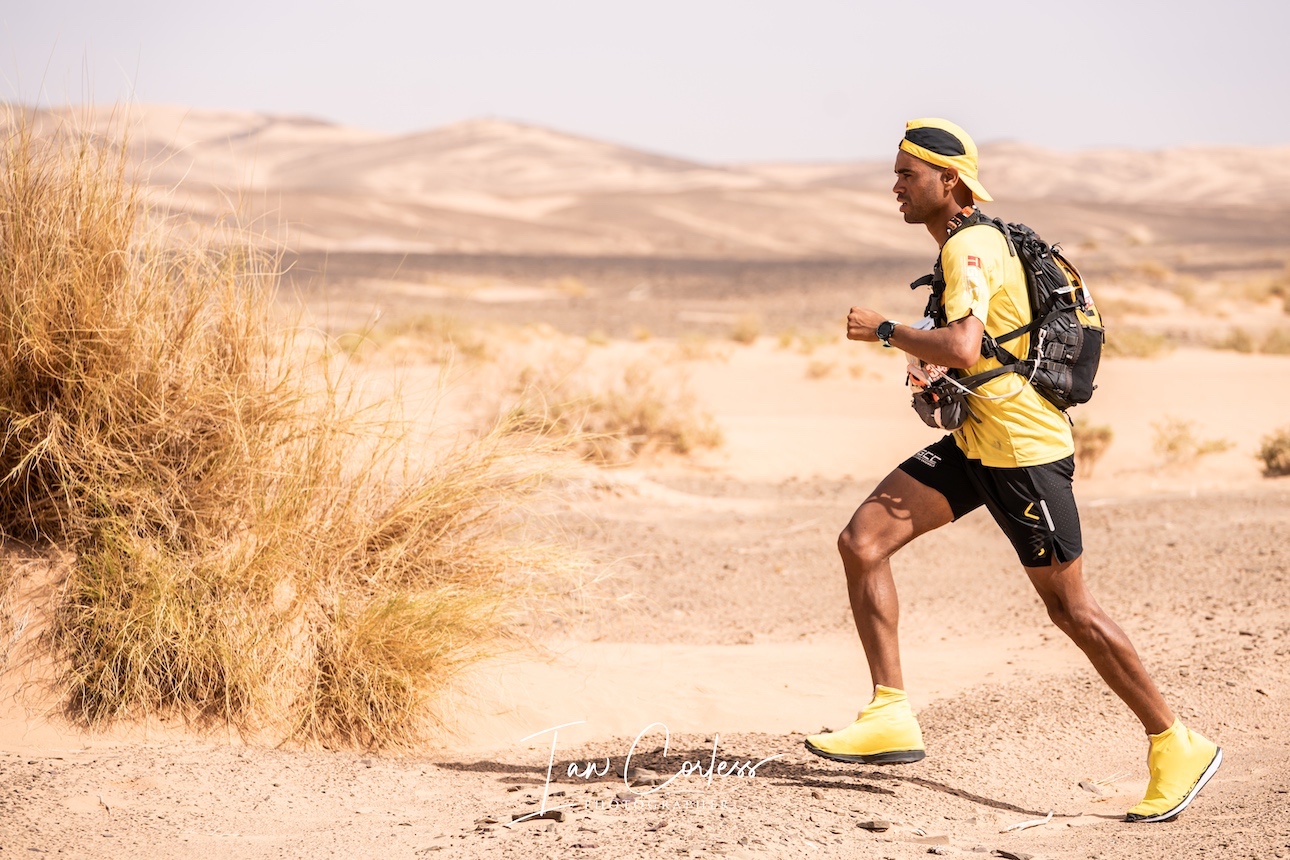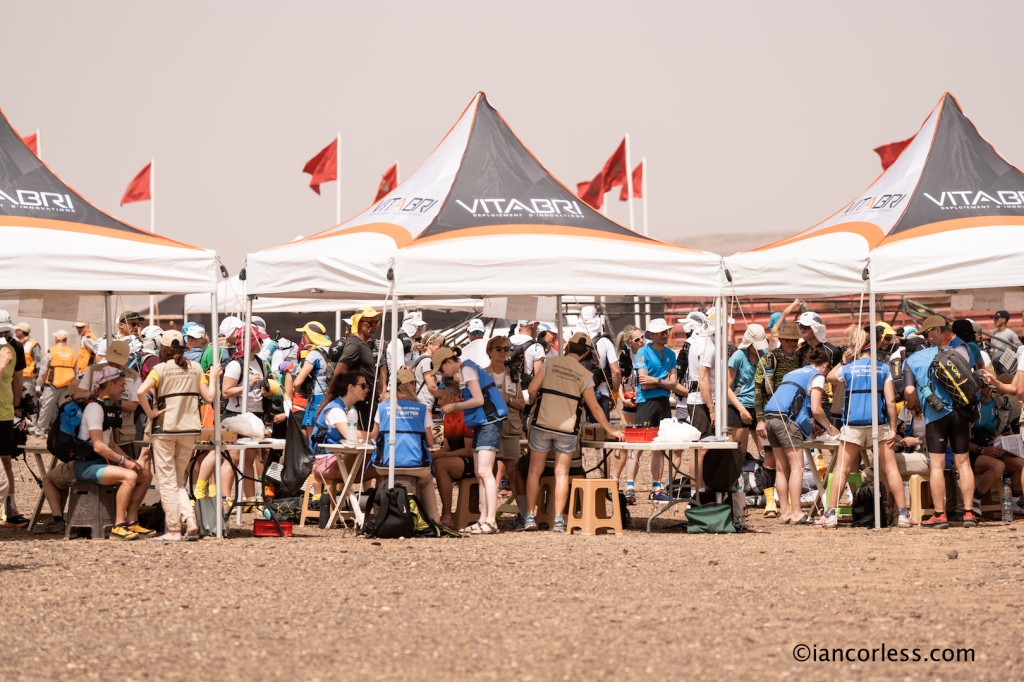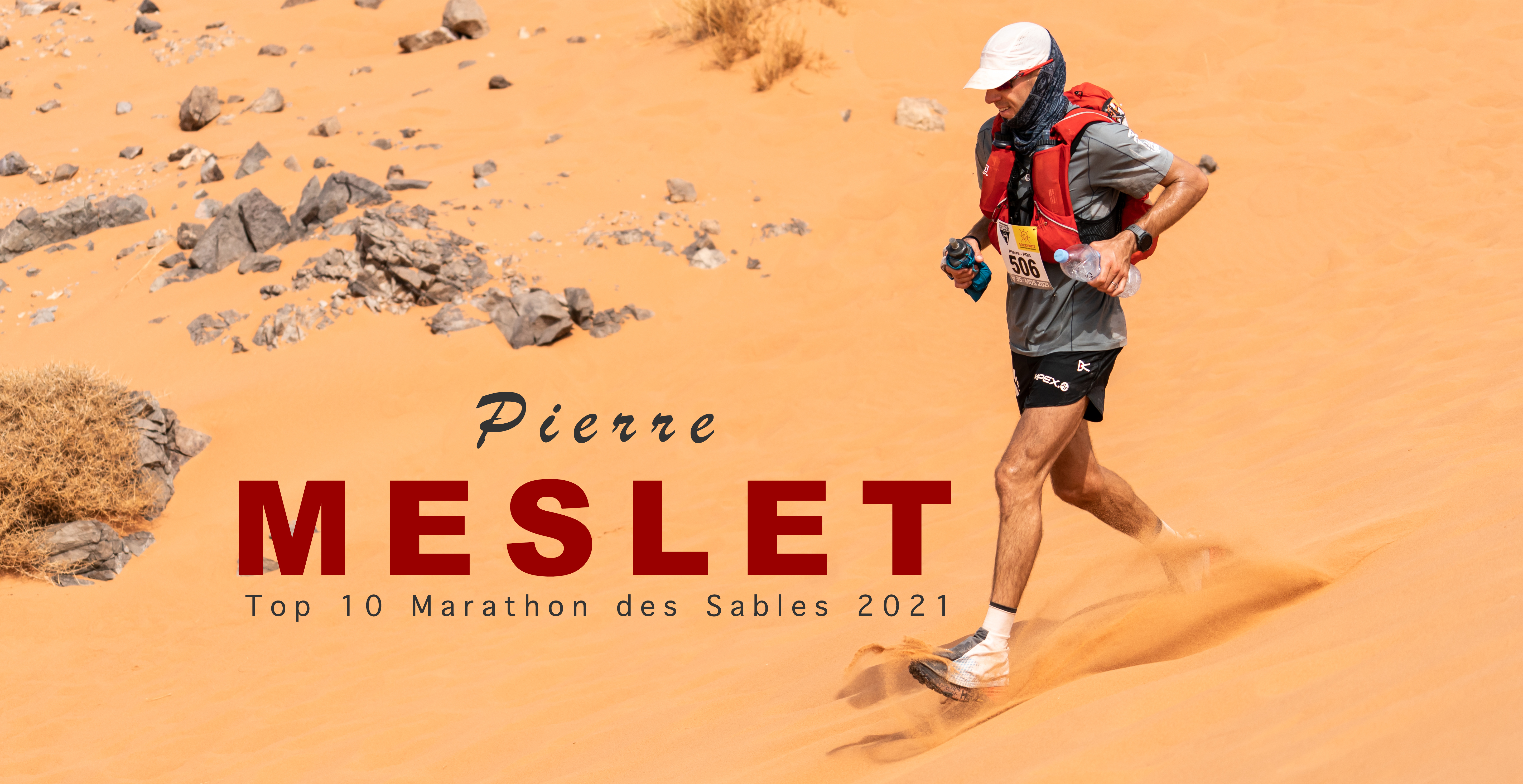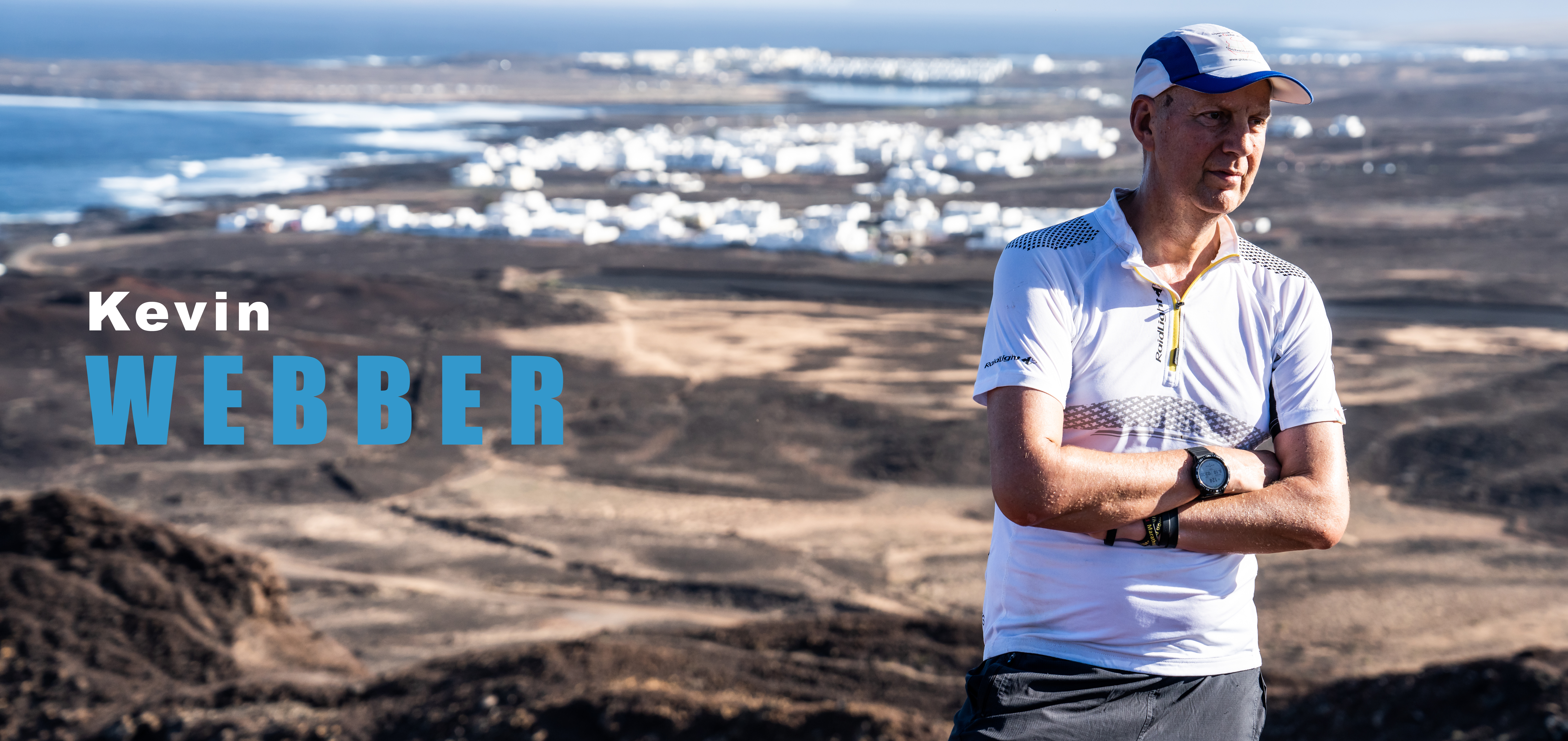
THE 2024 MDS THE LEGENDARY ROUTE
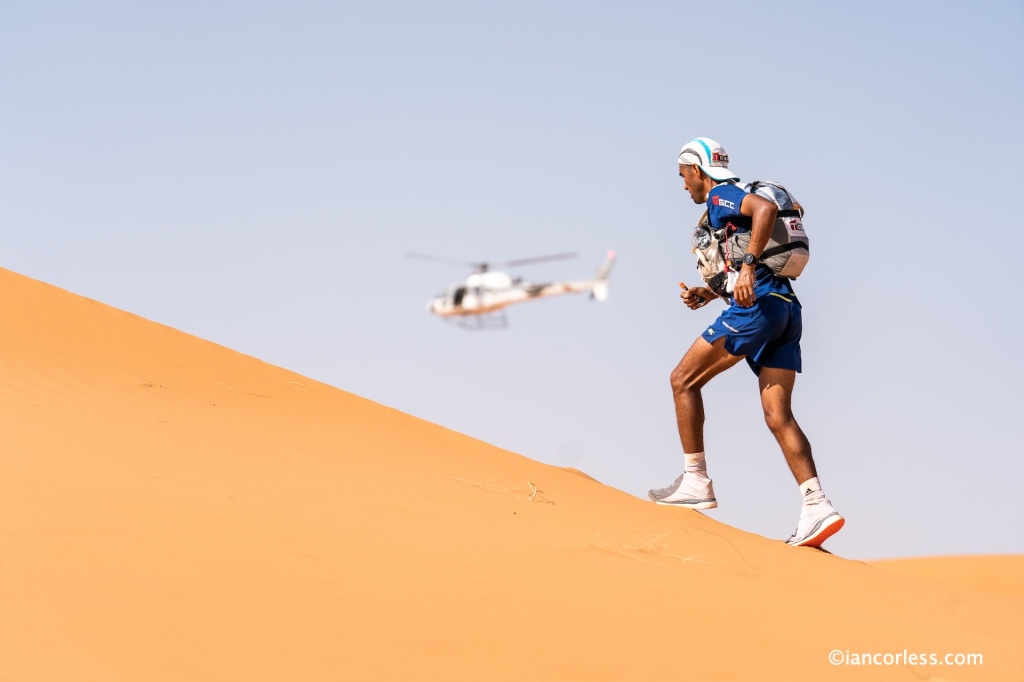
The 2024 and 38th edition of Marathon des Sables is here! MDS The Legendary, the longest edition in the history of the race, 252km’s over 6 timed stages.
Close to 900 participants will toe the line, exact numbers will be confirmed at bivouac 1. With 60 countries represented, France and the UK lead the with 267 and 178 participants respectively.
From the 900 starters, 27% are women; a record. The youngest participant will be Lionel Schneider (16) and the oldest, Harry Hunter who has just turned 75 on April 15th.
Runner’s will arrive in Morocco on April 12th for a transfer to the desert.
Saturday 13th is admin day and then the race schedule is as follows:
April 14 – STAGE 1 – Departure 0700 31.1km and 282m+
April 15 – STAGE 2 – Departure 0700 40.8km and 550m+
April 16 – STAGE 3 (The Long day which will go through to April 17) – Departure 0600 and 0730 for the top 50. 85.3km and 1154m+
April 18 – STAGE 4 – Departure 0630 and 0800 43.1km and 390m+
April 19 – STAGE 5 – Departure 0700 31.4km and 252m+
April 20 – STAGE 6 – Departure 0630 and then transfer back to Ouarzazate 21.1km and 160m+
April 21 – Ouarzazate
April 22 – Home travel
THE ROUTE
Unlike previous editions of MDS, the 2024 route will concentrate on one key area of the Sahara. It makes sense, it is the most beautiful. Therefore the race will not be a point-to-point but a series of journeys and participants will stay in the same bivouac on multiple occasions.
Importantly, Jebel El Otfal, Jebel Joha Baba Ali and the oasis of El Maharch will feature on the ‘long day’ however, there will be no Merzouga dunes during the race.
In summary:
Stage 1 B1 to B1 31.1km and 282m+

Stage 2 B1 to B2 40.8km and 550m+
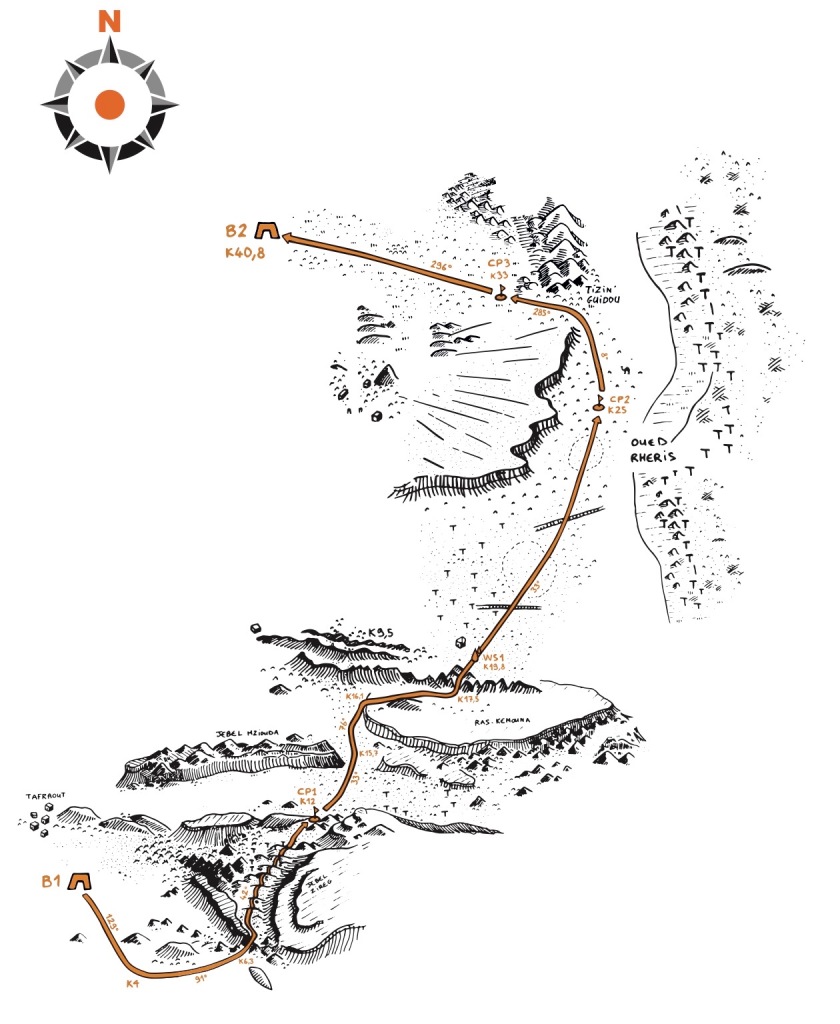
Stage 3 Is an elaborate series of tracks, B2 back to B2 85.3km and 1154m+

Stage 4 B2 to B3 43.1km and 390m+

Stage 5 B3 to B3 a looped route that makes a heart shape 31.4km and 252m+

Stage 6 B3 to finish 21.1km and 160m+

ONES TO WATCH
MEN

As in any MDS, there are the front contenders who will do battle for overall honours, in the men’s category, three obvious names are stand out: Mohamed El Morabity, Rachid El Morabity and Aziz Yachou. All eyes will be on Rachid, he is looking for a 10th MDS title and after the disaster in 2023 when he received a 2-hour time penalty, Rachid will be looking to make amends and make history. Mohamed, Rachids brother took the reigns in 2023 and won, but will this be allowed in 2024? Aziz Yachou gets stronger and stronger every year, he has a battle against the brothers though.
Petter Restrop, Yoann Stuck, Roberto Mastrotto, James Miller, Alessio Zambon, Ahmed Ouikhalfen, Stéphane Ricard,Mérile Robert, Hamid Yachou, Anthony Ginter, Romain Laguigner Abdelhadi Elmoustahli are also ranked as the top contenders, as always, there will be surprises.
WOMEN

Aziza Raji and Aziza El Amrany fly the Moroccan flag and are of course, top contenders for the podium. The UK’s Gemma Game is returning, she has placed 3rd twice in 2018 and 2019 – is this the year?
Lai King Chan, Adriana Moser, Saskia Plaucheur, Marie Houdusse, Amélie Ginter, Ninette Banoun, Magdalena Kalus, Alexandra Bailly, Annę Godefroy, Nina Stein and Katherine Beckingham are all in with a shout of top-10 and maybe the podium.
STORIES
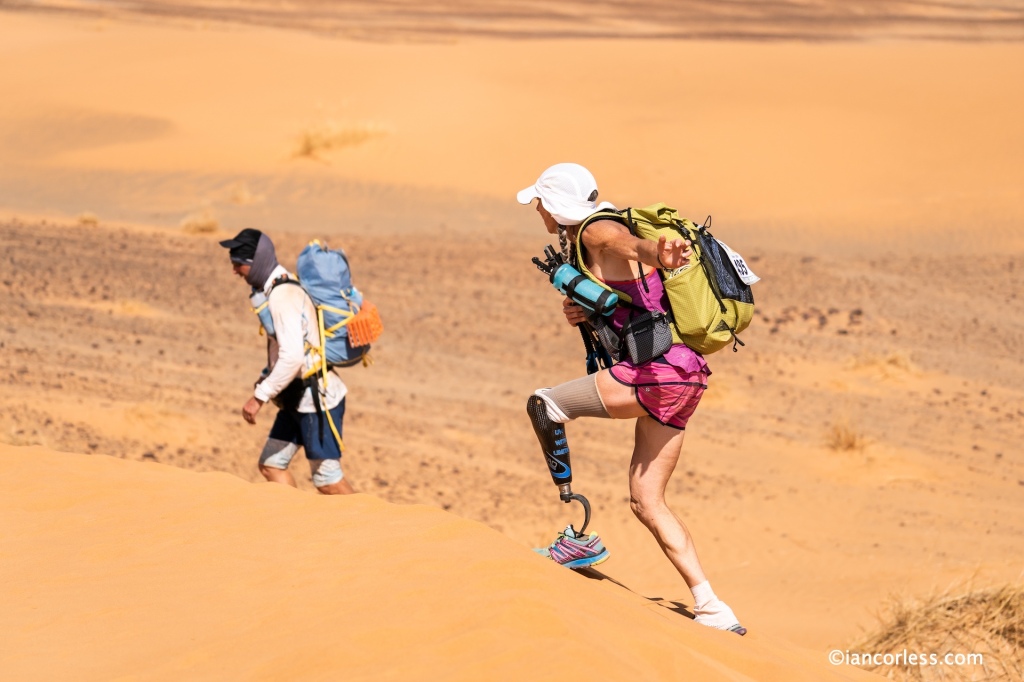
The MDS is always a place for stories, challenges, inspiration and adventure and the 38th edition will be no different. Often, these stories unfold as the race happens.
Mr MDS, Christian Ginter is back for his 36th edition, yes, his 36th! Rory Coleman from the UK return for his 16th and in and amongst these two highlight names, we will have new stories to follow and inspire us.
INTERESTING FACTS

In an effort to reduce the environmental impact of such a huge race, the MDS has taken some key measures.
In 2023 50 lorries were used, for 2024 this will be 20. In 2023 157 4×4 vehicles have been reduced to 78. A helicopter as per usual will be available for emergency use only. This equates to a 47% reduction I carbon emissions.
In addition, chartered flights were reduced to just 3 planes with an encouragement for participants to choose commercial options.
The use of local services has been increased using local staff, vehicles, trophies made in Morocco, and the catering team for staff will be all Moroccan with 100% of produce local and a reduction in chicken and beef.
In addition, checkpoints will have solar power and all communication relays utilise solar too.
Waste management has been improved and a key move has been to eradicate 1.5ltr bottles and replace with 5ltr.
Safety has always been a key concern and for 2024 there is an increase in medical staff, 65 up from 56, there 9 SSV rapid response vehicles, up from 4 in 2023. There will be 9 4×4 vehicles and new for 2024, 3 MTB riders and 9 runner’s who will participate on the race route offering immediate medical response. A medical point will be in the centre of bivouac so that immediate attention can be given if required.
ADVENTURE AWAITS
The 38th edition is now waiting to unfold. It’s a new era for the race. Let the adventure begin, MDS The Legendary makes history.
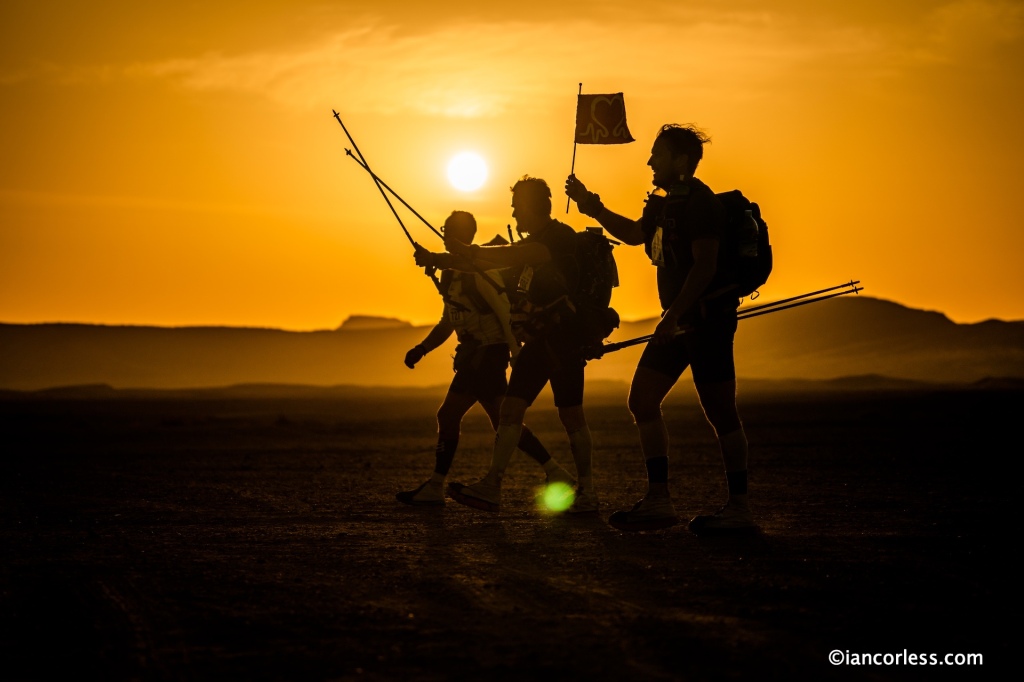
You can receive daily updates and reports on this website. Follow on IG @iancorlessphotography and @mdslegendary
You can also follow ‘live’ at owaka.live
Follow on:
Instagram – @iancorlessphotography
Twitter – @talkultra
facebook.com/iancorlessphotography
Web – www.iancorless.com
Web – www.iancorlessphotography.com
Image sales –www.iancorless.photoshelter.com


























